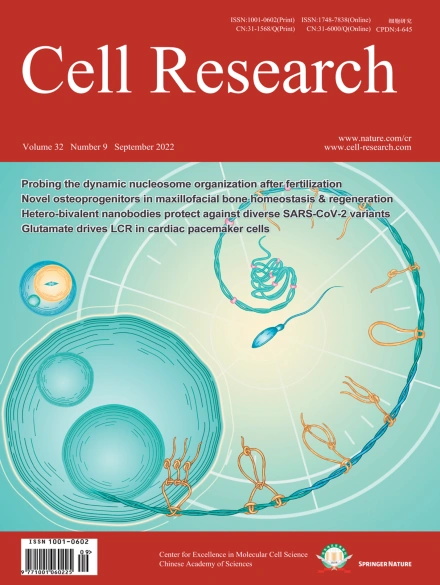
Advanced Search
Submit Manuscript
Advanced Search
Submit Manuscript
Volume 32, No 9, Sep 2022
ISSN: 1001-0602
EISSN: 1748-7838 2018
impact factor 17.848*
(Clarivate Analytics, 2019)
Volume 32 Issue 9, September 2022: 814-830 |
A novel lineage of osteoprogenitor cells with dual epithelial and mesenchymal properties govern maxillofacial bone homeostasis and regeneration after MSFL
Yuteng Weng , Haicheng Wang , Di Wu , Shuyu Xu , Xiaofan Chen , Jie Huang , Yanhuizhi Feng , Lin Li , Zuolin Wang*
Department of Oral Implantology & Department of Oral and Maxillofacial Surgery, Stomatological Hospital and Dental School of Tongji University, Shanghai Engineering Research Center of Tooth Restoration and Regeneration, Shanghai, ChinaBone regeneration originates from proliferation and differentiation of osteoprogenitors via either endochondral or intramembranous ossification; and the regeneration capacities decline with age and estrogen loss. Maxillary sinus floor lifting (MSFL) is a commonly used surgical procedure for guiding bone regeneration in maxilla. Radiographic analysis of 1210 clinical cases of maxilla bone regeneration after MSFL revealed that the intrasinus osteogenic efficacy was independent of age and gender, however; and this might be related to the Schneiderian membrane that lines the sinus cavity. In view of the particularity of this biological process, our present study aimed to elucidate the underlying mechanism of MSFL-induced bone regeneration. We first established a murine model to simulate the clinical MSFL. By single-cell RNA-sequencing and flow cytometry-based bulk RNA-sequencing, we identified a novel Krt14+Ctsk+ subset of cells that display both epithelial and mesenchymal properties and the transcriptomic feature of osteoprogenitors. Dual recombinases-mediated lineage tracing and loss-of-function analyses showed that these Krt14+Ctsk+ progenitors contribute to both MSFL-induced osteogenesis and physiological bone homeostasis by differentiating into Krt14–Ctsk+ descendants which show robust osteogenic capacity. In addition, we detected a similar population of Krt14+Ctsk+ cells in human samples of Schneiderian membrane, which show a highly similar osteogenic potential and transcriptomic feature to the corresponding cells in mice. The identification of this Krt14+Ctsk+ population, featured by osteoprogenitor characteristics and dual epithelial–mesenchymal properties, provides new insight into the understanding of bone regeneration and may open more possibilities for clinical applications.
https://doi.org/10.1038/s41422-022-00687-x